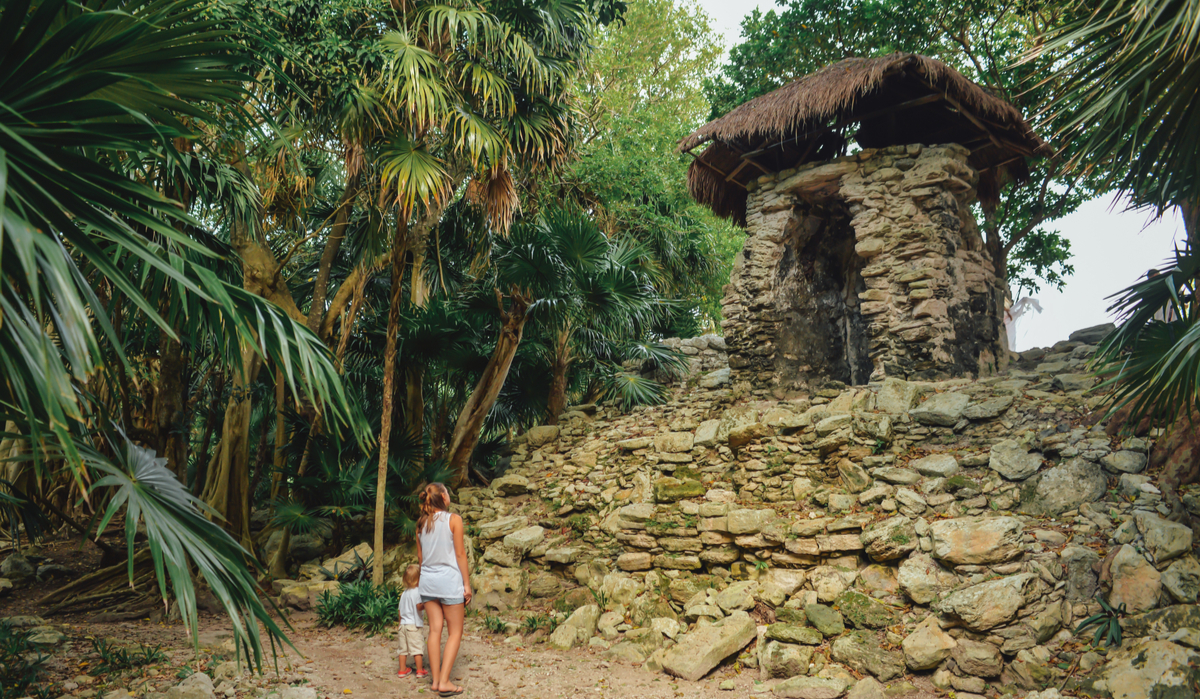Mayan Ruins Inside an Exclusive Residential Community
Jacque Costeau has long been credited for making Playa del Carmen and Cozumel popular but the Maya have been traveling between these two cities for centuries. The Playacar Ruins were a launching point for Maya women to honor the Goddess Ixchel on Cozumel Island. This annual spiritual pilgrimage was necessary in the eyes of the Maya for a healthy pregnancy and childbirth.
Spiritual Pilgrimage to Cozumel
The remaining three building groups of the original eight still exist within the exclusive Playa del Carmen community, Playacar. Both communities, one historic and one contemporary, are aligned more than most visitors know. Xaman Ha, the Mayan name for the Playacar ruins, was predominately a residential community during the Post-Classic period due to the easy access to Cozumel. Playacar boasts similar advantages; a peaceful residential community close to the Cozumel ferry and Caribbean Sea.
During the Post-Classic period, Xaman Ha, meaning waters to the north, was a fishing community on the extensive Mayan trade route. Trade would come from the northern communities of El Meco and El Rey, carry on to Tulum and be shipped into the coastal areas around Coba and beyond. The community was abandoned around 1526 due to the arrival of the Spanish in Mayan territory.

Fast Facts about Playacar Ruins
- The only free Mayan ruin site in Mexico – no entrance fees
- The only Mayan ruins maintained in an contemporary residential community
- Thought to be one of the first Mayan communities visited by the Spanish
- Original community has eight groups of buildings, only three remain
- Post-Classic architecture was a mix of stone bases, wood, and palm leaves
- One for three coastal Mayan communities that lead an annual female pilgrimage to Cozumel to honor the Goddess Ixchel
- Active during 1200 AD to 1526 AD, post-classic period
A Great Mayan Adventure in Playa del Carmen
The three remaining groups of buildings are labeled Groups C, E and F. These ruins can be viewed in Playacar Phase One and Playacar Phase Two. For those staying in Playacar Phase Two there is a short cut through the jungle to the small temples in Phase One.
Group E and F is one mile from the entrance to Playacar Phase Two. Visitors can walk Paseo Xaman Ha to the south. The ruins can be viewed from the roadway but do allow visitors to walk through the ancient grounds. Group C can also be accessed off Paseo Xaman Ha (a sign will direct you) through a small jungle path. If you are staying in Phase One, Group C can be accessed from Bahia Espiritu Santo. The ruins can be viewed from the road, and approached on foot.
Local schools conduct summer and winter solstice events at the Playacar Ruins in recognition of the local culture and history that built Playa del Carmen. Events are open to the public and participants are encouraged to join the celebrations.
Getting to the Playacar Ruins in Playa del Carmen
Playacar Phase One can be accessed off Avenida 10 just south of Calle 1 sur. on the east side of the Avenue. Playacar Phase Two is at the end of Avenida 10. This adventure is best done on foot, but a taxi can take you to both ruin locations if you wish to drive to the area.
